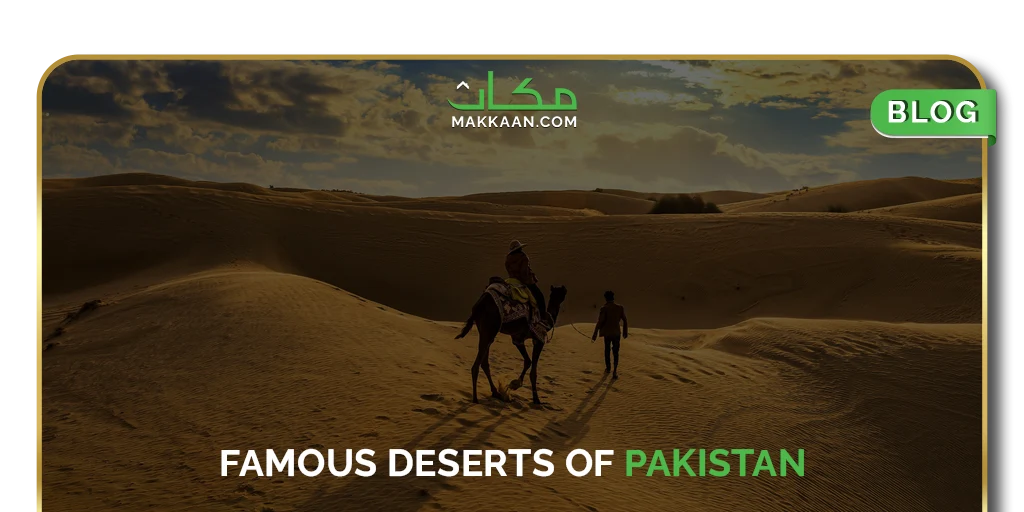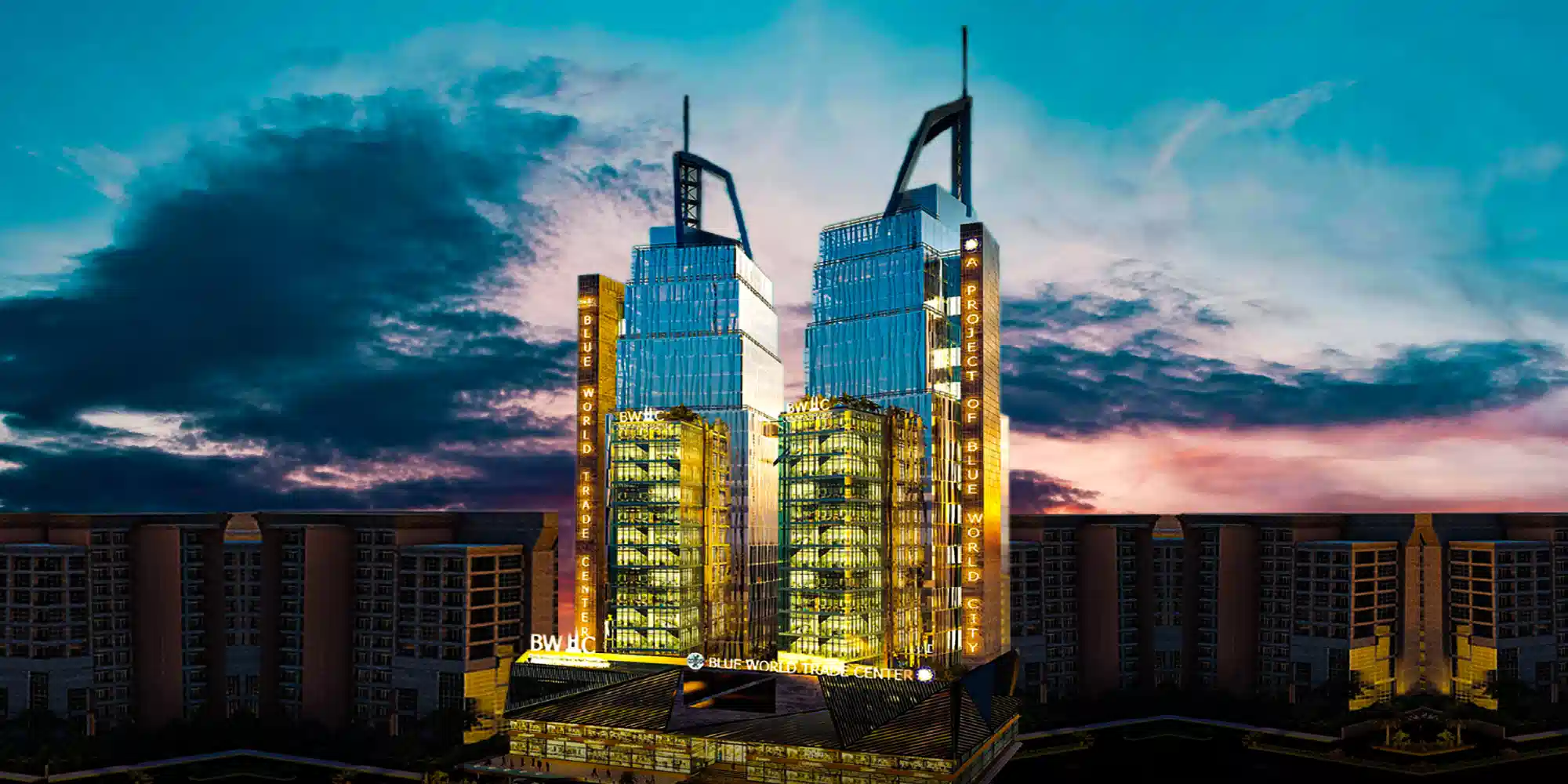Famous Deserts of Pakistan
Pakistan is a captivating destination for tourism, boasting stunning mountain ranges, lesser-known yet remarkable hill stations, and captivating heritage sites. The country’s natural beauty has led to its recognition as a top tourist spot for 2020. Pakistan’s diverse topography includes fascinating deserts, covering about 10% of its land. These deserts, found in various regions, each possess distinct characteristics that set them apart.
In this blog, we will delve into intriguing details about Pakistan’s expansive and enigmatic desert landscapes.
List of Famous Deserts
- Thar Desert
- Cholistan Desert
- Kharan Desert
- Thal Desert
- Katpana Desert
- Cold Desert
Thar Desert
Our list is top with Thar, the largest desert of Pakistan. Also recognized as the Great Indian Desert, encompassing one of the world’s expansive arid regions. This colossal desert spans both India and Pakistan, covering a vast 175,000 square kilometers. It stands as Asia’s sole subtropical desert, with around 85% of its expanse situated in India, leaving the remaining portion within Pakistan’s borders.
Thar’s distinction as Pakistan’s biggest desert is marked by several remarkable traits. Its population surpasses 30 million people, rendering it one of the most densely inhabited desert areas globally. Despite its challenging climatic conditions and harsh environment, the desert remains accessible and has earned the moniker of Pakistan’s hospitable desert.
The people who call Thar home practice Islam and Hinduism, resulting in a rich, diverse cultural tapestry accentuated by vibrant celebrations held throughout the year. Predominantly sustained by a nomadic lifestyle, Thar’s primary livelihood revolves around animal husbandry and agriculture.
Cholistan Desert - Rohi Desert
Thal Desert
Thal stands as Pakistan’s third largest and most prominent desert, situated amidst the Punjab region’s Pothohar plateau, flanked by the Sindh and Jhelum rivers. This expansive sandy expanse spans approximately 20,000 square kilometers, stretching
305 km in length and ranging from 32 km to 112 km in width. About half to three-fifths of the desert is covered in sand dunes.
Encompassing several districts in Punjab, including Bhakkar, Mianwali, Khushab, Layyah, Muzaffargarh, and Jhang, this captivating desert lies along the left bank of the Jhelum River. Despite its challenging climate, the Thal desert is not a barren wasteland; rather, it hosts valuable cultivation of green chickpeas (known as “ہرے چھولے”) from February to March, a popular food item in Sindh and Punjab.
Among its notable attributes, the Thal Canal stands out, serving as a vital feature of the desert landscape. This canal’s waters are harnessed for irrigation and livestock nourishment. Once the harvest season concludes, the desert reverts to its raw emptiness, with the canal waters becoming the sole source of daily activities. Wind cyclones also frequently sweep through the Thal Desert.
Temperatures within the Thal desert can surge to 44º C and plummet to 0º C, with June marking the peak of the scorching heat. The region is characterized by a mix of languages, including Urdu, Saraiki, and Thalochi, spoken widely across the area.
Katpana Desert
Pakistan is a treasure trove of wonders, and among these marvels lies the captivating Katpana desert. Recognized as the Cold Desert of the nation due to its elevated altitude, Katpana resides within the renowned tourist destination of Skardu, nestled in the northern region of Gilgit Baluchistan. This desert is a realm of astonishment, featuring expansive sand dunes blanketed by snow during the winter season.
The Cold Desert stands as a singular gem on the map of Pakistan’s deserts. Perched at an impressive elevation of 7,303 feet (2,226 meters) above sea level, it ranks among the highest deserts in the country. Spanning the area between Skardu and the Shigar Valley, this desert is conveniently accessible from the nearby airport.
Throughout October, temperatures fluctuate between 81º F (27º C) and 46º F (8º C). However, as the months progress, the mercury plummets to 1º C (17º C) in December and January, occasionally even reaching a bone-chilling -13º F (25º C). The sprawling expanse draped in a pristine blanket of snow creates a captivating visual, amplifying its allure as a sought-after tourist destination. Hence, tourism stands as the predominant economic pursuit within the region, capitalizing on its scenic magnificence.
Kharan Desert
Situated in the southwestern reaches of Pakistan within Balochistan, the Kharan Desert, also referred to as the Karan Desert, emerges as a sandy expanse. This desert has etched its name onto the map of Pakistan as a notable geographic feature. Notably, it gained prominence following Pakistan’s second nuclear test, Chagai-II, which took place on May 30, 1998, amid the surrounding mountain ranges.
Diverse attributes contribute to the recognition of the Kharan Desert among Pakistan’s noteworthy deserts. The locale’s climate is characterized by aridity, prompting its inhabitants to engage predominantly in agriculture and farming for sustenance. The landscape predominantly consists of dry, brown sands that extend across the terrain, lending credence to its identity as a sandy desert on Pakistan’s map.
Beyond its physical aspects, the Kharan Desert holds historical significance. It is noted that even Alexander the Great traversed this desert, proceeding through the Khyber Pass subsequent to his victory over King Porus in the 4th Century BC. While Baluchistan generally contends with a parched climate, the Kharan Desert distinguishes itself through its sandy attributes, with elevations ranging from 1000 meters in the northeast to 500 meters in the west. The desert’s western expanse extends into Iranian territories.
Cold Desert
Katpana Desert, also known as the Cold Desert, is a high-altitude arid region situated in Skardu, in the northern region of Gilgit-Baltistan. This desert boasts expansive sand dunes that transform into a snowy landscape during the winter months.
Found at an impressive elevation of 2,226 meters (7,303 feet) above sea level, the Katpana Desert ranks among the world’s loftiest deserts. Its primary expanse spans across Skardu and the Shigar Valley, conveniently reachable via the nearby airport.
Temperature variations within the Katpana Desert span from a peak of 27°C (81°F) to a lower limit of 8°C (46°F) during October. As the months transition, temperatures plummet further to sub-zero levels, dropping below -17°C (1°F) in December and January, occasionally reaching an extreme of -25°C (-13°F).
These presented intriguing facts and insights offer a glimpse into Pakistan’s significant desert landscapes. These arid expanses stand as a testament to the country’s diverse natural beauty. For intrepid adventurers and explorers, a visit to these deserts is a must. Should you have any inquiries about Pakistan’s desert regions, feel free to leave a comment below, and we will promptly respond to your queries.
Conclusion
That concludes our current discussion! We trust you found delight in exploring the captivating highlights of Pakistan’s prominent deserts. Keep an eye on the realtorspk.com blog section for further engaging and enjoyable insights about Pakistan. Don’t miss out on the opportunity to delve into our article about Pakistan’s provinces as well.
If you want to know more visit Makkaan.com or contact us at UAN: +923311111049.













